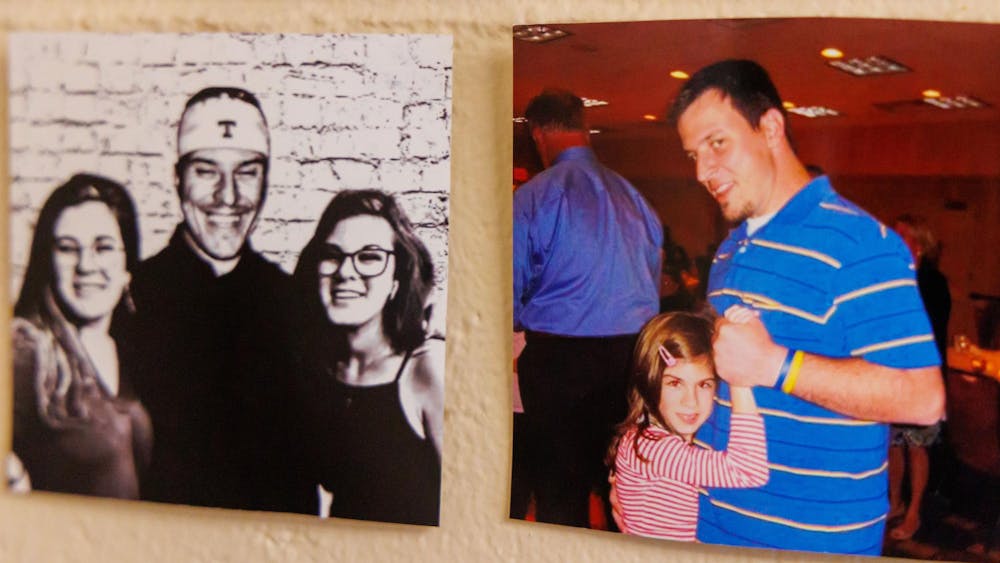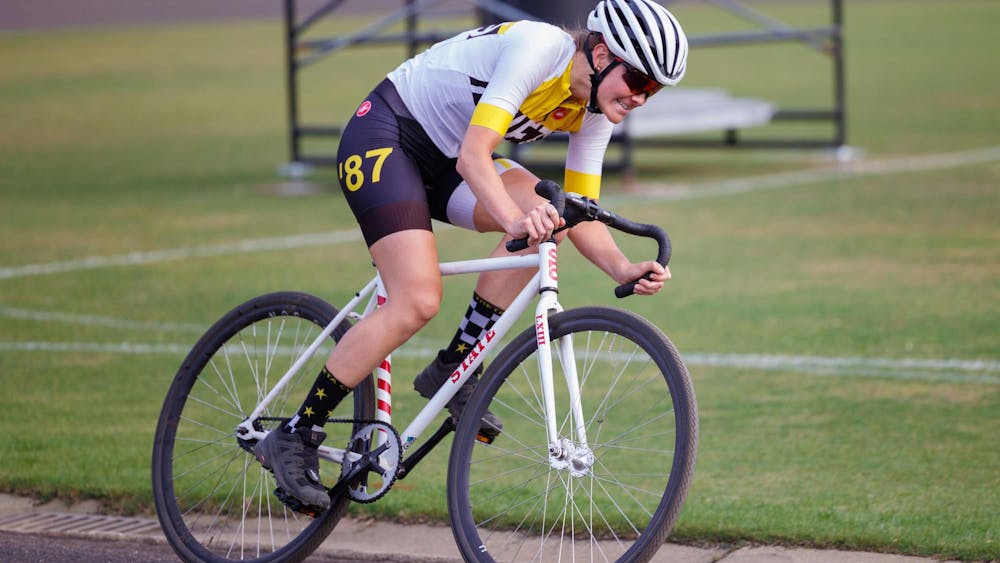In a diversity-friendly college environment, sushi and saris have replaced any genuine debate. But last Thursday, even the intense smell of Thai pad noodles failed to entice more than 15 students to a diversity education program to teach people about Asian clothing.\nLike IU, colleges nationwide have instituted diversity education programs to cultivate cultural appreciation.\nAmid discussion regarding the success of diversity education programs, people apparently have yet to consider whether universities can realistically teach diversity. Ambiguous claims rather than concrete answers provide fodder for future programs in which clothing demonstrations have become synonymous with global understanding.\nTEACHING EXPERIENCE\nIn every dorm on campus lives a CommUnity Educator -- a person responsible for teaching the seemingly impossible.\nSophomore Christina Dunbar, McNutt's CUE, co-sponsored Thursday's program.\nDespite criticism regarding diversity education, Dunbar said she thinks diversity is teachable.\nShe used herself as a case in point. Last year, Dunbar participated in "Conversations on Race." The education Dunbar received from the program increased her understanding of the importance of diversity.\nShe wanted to be a part of the process. She, too, wanted to promote harmony. Dunbar optimistically said she's never encountered any cases in which she has thought it impossible to teach people about diversity.\n"Everybody's not going to get it at the same time," Dunbar said, explaining the obstinate behavior of some people.\nBut Dunbar kees trying. She works to sift through opinions and find actual information. \n"We're educators. We have to come up with facts," Dunbar said.\nSTUDENT-TEACHER EVALUATION\nDespite an emphasis on facts, opinion dictates much of the CUE program. Ruminations and reflections indicate the program's success. \nFreshman Neil Shah, a child of Indian and Filipino parents, said he wouldn't attend diversity education programs.\n"I've been to other countries," Shah said, sporting a French Connection United Kingdom T-shirt. "I consider myself diverse."\nLiving in Eigenmann, Shah said he didn't know the dorms had CUEs.\nHe hesitated when trying to explain whether or not diversity education could benefit students.\n"It'll help those who show up, but you can't force it upon someone," Shah said.\nIn order to fully comprehend diversity, Shah said students should dive into hands-on projects.\n"I don't think you can teach it. You can experience it," he said. "It's hard to teach things in theory."\nRegardless of his skepticism, Shah commends the CUEs' efforts.\n"It couldn't hurt," he said. "It could help teach people."\nWhile students from different cultural backgrounds doubt the efficiency of diversity programs, many white students advocate diversity education.\nSophomore Casey Brown, a product of diversity education, showed support for the CUE program. \n"There's probably going to be underlying, negative thoughts, but if you work on it hard enough, it can be changed," Brown said.\nIn high school, he taught elementary school children about cultural diversity and the importance of judging people for their character rather than their color.\n"Right now, I think we're still young enough and malleable enough to try and learn new things," Brown said.\nDespite his enthusiasm, Brown hasn't attended any diversity programs in his two years at IU. \nREPORT CARD ON DIVERSITY EVALUATION\nFor Barry Magee, assistant director of diversity education at RPS, diversity is a never ending -- a lifetime education.\n"How do we define teach?" he asked. "Can I or anybody else have a class, a lecture, a program…and force you to regurgitate it? To me that's not really teaching about anything."\nInstead Magee encourages analogies. He compares diversity education to a smorgasbord of food. \n"You pique interest in certain areas, and they're willing to try it," he said.\nEven after nine years at RPS, Magee said he doesn't know everything about diversity. \n"I still learn something at almost every program I go to," he said.\nCUEs use a mix of passive and active programs to cater to students' needs. Nearly every day of the week, CUEs in one or more of the dorms host a diversity event. Programs range from dance workshops to food fests.\n"It's impossible for us to know what we don't know," Magee said. "It's only when we're confronted with the unknown that we really begin to learn."\nDespite its 14-year history, the CUE program's success is difficult to analyze, Magee said.\nThough Magee admits he can't force-feed someone diversity, he has a suggestion for improving the current curriculum.\n"It shouldn't just be limited to my job," he said.\nIn order to stimulate a truly diverse atmosphere, all aspects of the University must help foster a comfortable environment for minority students.\nINNOVATIVE INSTRUCTION\nIU President Adam Herbert's ideas reflect Magee's plans. \n"I'm not sure you can teach (diversity) to students," Herbert said. "You can foster a climate of understanding."\nHerbert said the cultural knowledge he gained as a student at the University of Southern California differed greatly from his experiences in a small Oklahoma town during segregation. But the accumulation of diverse ideologies made him more sensitive.\nRobert Shireman, former director of the higher-education program at the James Irvine Foundation, also emphasized the importance of diversity encompassing a university rather than limiting itself to isolated programs.\n"It is not enough to report that 30 new multicultural courses have been created or improved, and that minority students at a campus are happy with the curriculum," Shireman wrote in "10 Questions College Officials Should Ask About Diversity," an article that appeared in an August edition of The Chronicle of Higher Education.\nMinority students don't always feel a part of the campus, Shireman said. Instead they feel like a guest on an extended visit; the University's always striving to make them feel "welcome." \n"In too many cases, the work that we have all done to deal with the issue of diversity has been much too shallow. Ethnic theme parties, films and guest speakers can be important symbols, but they are a small part of what influences the campus climate," Shireman wrote.\nSenior Christina Lim, the Eigenmann CUE and Shah's diversity leader, said she's often heard people scoff at the idea of teaching diversity.\nForcing people to understand diversity won't always prove beneficial, Lim said.\nFor Lim, the success of diversity education depends on the programs.\n"A discussion rather than a debate is really good," Lim said.\nLim encourages more programs in which students can actually participate ( programsin which students can talk with others and learn) not just blindly watch cultural demonstration. "I can't really teach someone," Lim said. "It's really hard for me to change their opinions in one sitting."\n-- Contact Features editor Asma Khalid at amkhalid@indiana.edu.
Diversity 101
Educators make effort to teach global understanding
Get stories like this in your inbox
Subscribe





